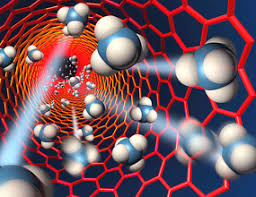Sensitive Nanoparticles LSPR (Optical Nanosensors) and Applications in the Electronic and Military Industry Based on Nanotechnology Ph.D.
Author and Researcher: Engineer Afshin Rashid
Note: The LSPR energy is sensitive to the dielectric performance of the material and the environment, shape and size of the nanoparticles. That is, if a ligand like protein binds to the surface of the metal nanoparticles, its LSPR energy changes. Similarly, the effects of LSPR are also sensitive to other changes, such as the distance between nanoparticles that can be altered by the presence of surfactants or ions.
One of the consequences of the LSPR effect on metallic nanoparticles is the extraordinary absorption ability of visible waves due to coherent oscillations of palmsons. Cloud Yydhay metal nanoparticles such as silver or gold can be colors like red, purple or orange to show that ordinary size is not. This color change depends on the shape, size and environment of the silver nanoparticles.
In the structure of nanosensitive optical sensors, one of the nano-distinguishing properties of metallic nanoparticles from these large-scale materials is their optical properties. This is due to localized surface palm resonance . Simply put, when light hits (metal surfaces) at any size, some of the light waves along the metal surfaces by creating a surface pulson actually give part of their energy to the surface electrons and cause them to vibrate (scatter). ) . When pulsum is produced in mass metals, electrons can move freely in materials without any trace.
In nanoparticles, the surface palmsmone is confined to space, such that electrons in this small space fluctuate back and forth in the same direction . This effect is called localized surface plasmon resonance (LSPR). When the frequency of these oscillations is equal to the frequency of the light generating the pulson, it is said to be in the resonance with the light.
Nano-sensors and electron excitation reaction and applications in military and electronics industries
Light absorption also occurs in ordinary materials with continuous energy bands, and electrons are transferred from the valence band to the conduction band, although here the thermal energy can also trigger electrons to the conduction band. Like atoms , nanoparticles have discrete energy levels. Hence, nanoparticles are also called synthetic atoms. Also known as nanoparticles below 01 nm, and especially semiconductor nanoparticles, is the quantum dot. As the size of the nanoparticles changes, their energy balance changes. The smaller the size of the nanoparticles, the greater the gap between the energy levels and the forbidden band, and the larger the particle size, the lower the energy balance . This makes it possible to adjust the distance between their energy levels by changing the size of the nanoparticles to allow specific waves. To absorb. For example, the dimensions of nanoparticles of a particular material can be adjusted to absorb infrared, ultraviolet, radio, and so on . This property is widely used in the military and electronics industries.





